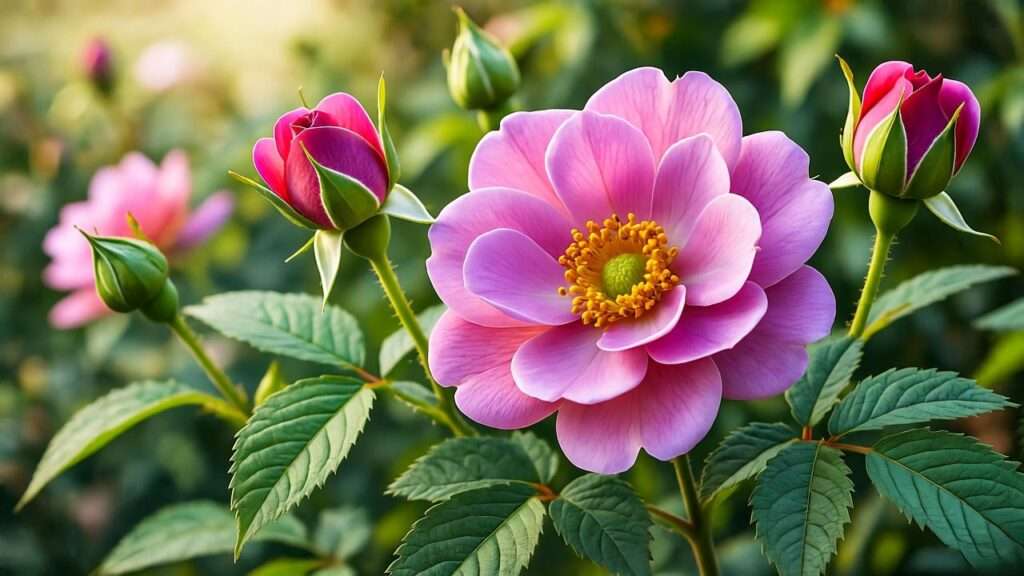Imagine stepping into your garden, greeted by the intoxicating fragrance of damask rose plants, their delicate petals swaying in the breeze. These timeless beauties, with roots tracing back to ancient Persia, have captivated gardeners for centuries with their vibrant blooms and rich history. Whether you’re a novice gardener or a seasoned horticulturist, growing damask roses can transform your outdoor space into a fragrant oasis. In this comprehensive guide, we’ll share expert-backed tips to help you cultivate healthy damask rose plants, ensuring lush foliage and stunning flowers. From planting to pruning, we’ve got you covered with practical advice to solve common challenges and achieve blooming success! 🌸
This article draws on horticultural expertise, historical knowledge, and real-world gardening experience to provide a definitive resource for damask rose care. Let’s dive into everything you need to know to grow these enchanting roses and keep them thriving year after year.
1. Understanding Damask Rose Plants 🌿
1.1 What Are Damask Rose Plants?
Damask roses (Rosa damascena) are a historic class of roses originating in the Middle East, renowned for their intense fragrance and elegant blooms. Named after the city of Damascus, these roses have been cultivated since ancient times, used in perfumes, rose water, and ornamental gardens. Their flowers, typically pink, red, or white, bloom in clusters with soft, velvety petals, while their thorny stems add a classic rose charm.
There are two main types: Summer Damask, which blooms once in early summer, and Autumn Damask, known for repeat blooming into fall. Both offer unique appeal, with Autumn Damask being a favorite for extended flowering seasons.
1.2 Why Grow Damask Roses?
Damask roses are a gardener’s dream, combining beauty, fragrance, and versatility. Their blooms elevate any garden’s aesthetic, while their scent is perfect for aromatherapy or homemade products like rose oil or tea. These roses are relatively hardy, making them suitable for various climates (USDA zones 4–9) and ideal for gardeners seeking low-maintenance yet high-impact plants. Plus, their historical significance—used in ancient rituals and modern perfumery—adds a layer of cultural allure to your garden.
1.3 Common Challenges for Beginners
Growing damask roses is rewarding, but beginners may face hurdles like pest infestations, soil issues, or improper pruning. This guide addresses these challenges with expert solutions, ensuring your roses thrive. Whether you’re battling aphids or struggling with yellowing leaves, we’ll provide actionable steps to keep your damask rose plants healthy and vibrant.
2. Preparing to Grow Damask Rose Plants 🌱
2.1 Choosing the Right Damask Rose Variety
Selecting the right variety is key to success. Popular damask rose cultivars include:
- ‘Ispahan’: Known for its vibrant pink blooms and strong fragrance, ideal for warm climates.
- ‘Madame Hardy’: A white-flowered variety with a citrusy scent, perfect for cooler zones.
- ‘Quatre Saisons’: A repeat bloomer with soft pink flowers, great for continuous color.
Consider your climate, garden space, and bloom preferences when choosing. For beginners, disease-resistant varieties like ‘Ispahan’ are a smart choice to minimize maintenance.
Expert Tip: Check with local nurseries for varieties suited to your region’s climate for optimal growth.
2.2 Ideal Growing Conditions
Damask roses thrive under specific conditions:
- Sunlight: They need 6–8 hours of direct sunlight daily to produce vibrant blooms ☀️. Partial shade may reduce flowering.
- Soil: Well-draining, loamy soil with a pH of 6.0–7.0 is ideal. Test your soil and amend with compost if needed.
- Climate: Damask roses perform best in USDA zones 4–9. In colder regions, provide winter protection; in hotter climates, ensure adequate water.
2.3 Sourcing Quality Plants
Purchase damask roses from reputable sources like local garden centers, online nurseries (e.g., David Austin Roses), or rose societies. Look for plants with:
- Healthy, green leaves without spots or wilting.
- Strong, well-developed roots (bare-root roses are often best for beginners).
- No signs of pests or disease.
Expert Insight: Bare-root roses, planted in early spring, establish stronger root systems compared to potted plants, leading to healthier growth.
3. Planting Damask Rose Plants 🌼
3.1 Best Time to Plant
The ideal planting time is early spring or fall, when temperatures are mild, allowing roots to establish before extreme weather. In colder climates (zones 4–6), spring planting prevents winter damage. In warmer regions (zones 7–9), fall planting works well to leverage cooler temperatures.
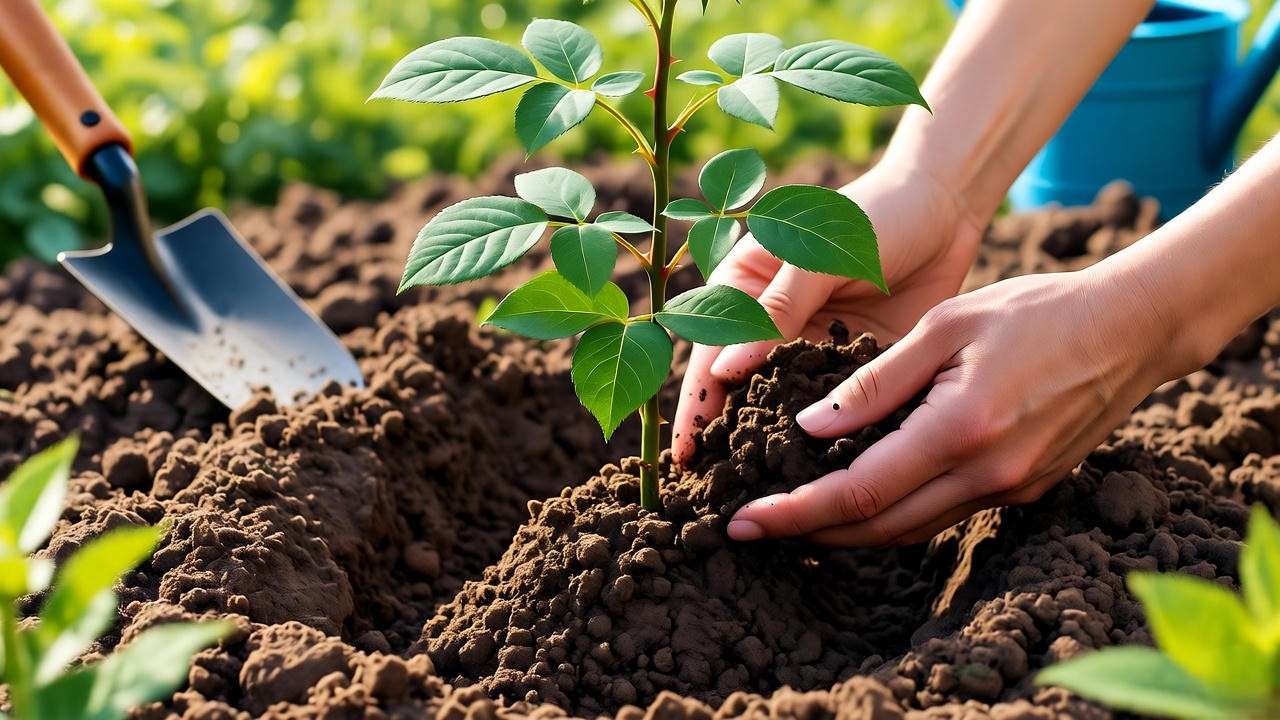
3.2 Step-by-Step Planting Guide
- Prepare the Site: Clear weeds and debris. Amend soil with organic matter like compost or aged manure to improve drainage and fertility.
- Dig the Hole: Make it 18 inches wide and deep, ensuring enough space for roots. Space plants 3–4 feet apart for airflow.
- Plant the Rose: For bare-root roses, position the graft union (the swollen area where the rose is grafted onto rootstock) just below soil level in cold climates or slightly above in warm climates. Spread roots evenly and backfill with soil.
- Water Thoroughly: Water deeply after planting to settle the soil. Aim for 1–2 gallons per plant.
3.3 Container vs. Ground Planting
- Ground Planting: Best for long-term growth, allowing roots to spread freely. Ensure proper spacing to prevent overcrowding.
- Container Planting: Ideal for small spaces or patios. Use a 15–20-gallon pot with drainage holes and a mix of potting soil, compost, and perlite. Water more frequently than ground-planted roses.
Tip: For potted roses, choose a container with a wide base to prevent tipping as the plant grows.
4. Caring for Damask Rose Plants 🧑🌾
4.1 Watering Requirements
Damask roses need consistent moisture but hate soggy roots. Water deeply 1–2 times per week, providing 1–2 inches of water. Adjust based on weather:
- Summer: Increase watering during hot, dry spells.
- Winter: Reduce watering as plants enter dormancy.
Signs of Watering Issues:
- Overwatering: Yellowing leaves, root rot, or mushy stems.
- Underwatering: Wilting, drooping leaves, or stunted growth.
Use a soaker hose or drip irrigation to deliver water directly to the root zone, minimizing leaf wetness.
4.2 Fertilizing for Healthy Growth
Fertilize damask roses to promote lush foliage and abundant blooms:
- Organic Options: Compost, well-rotted manure, or fish emulsion provide slow-release nutrients.
- Synthetic Options: Use a balanced 10-10-10 NPK fertilizer or rose-specific formulas.
- Schedule: Apply in early spring as new growth begins and again in mid-summer after the first bloom flush.
Expert Tip: Avoid over-fertilizing, which can lead to excessive foliage at the expense of flowers. Follow package instructions carefully.
4.3 Pruning Damask Roses
Pruning encourages airflow, shapes the plant, and boosts blooming. Prune in late winter or early spring when buds begin to swell:
- Tools: Use sharp, clean bypass pruners to avoid crushing stems.
- Technique: Remove dead, damaged, or crossing branches. Cut back healthy stems by one-third, making 45-degree cuts above outward-facing buds.
- Example: For ‘Ispahan,’ focus on opening the center of the plant to improve light penetration and air circulation.
Safety Tip: Wear gloves to protect against thorns and sanitize tools to prevent disease spread.
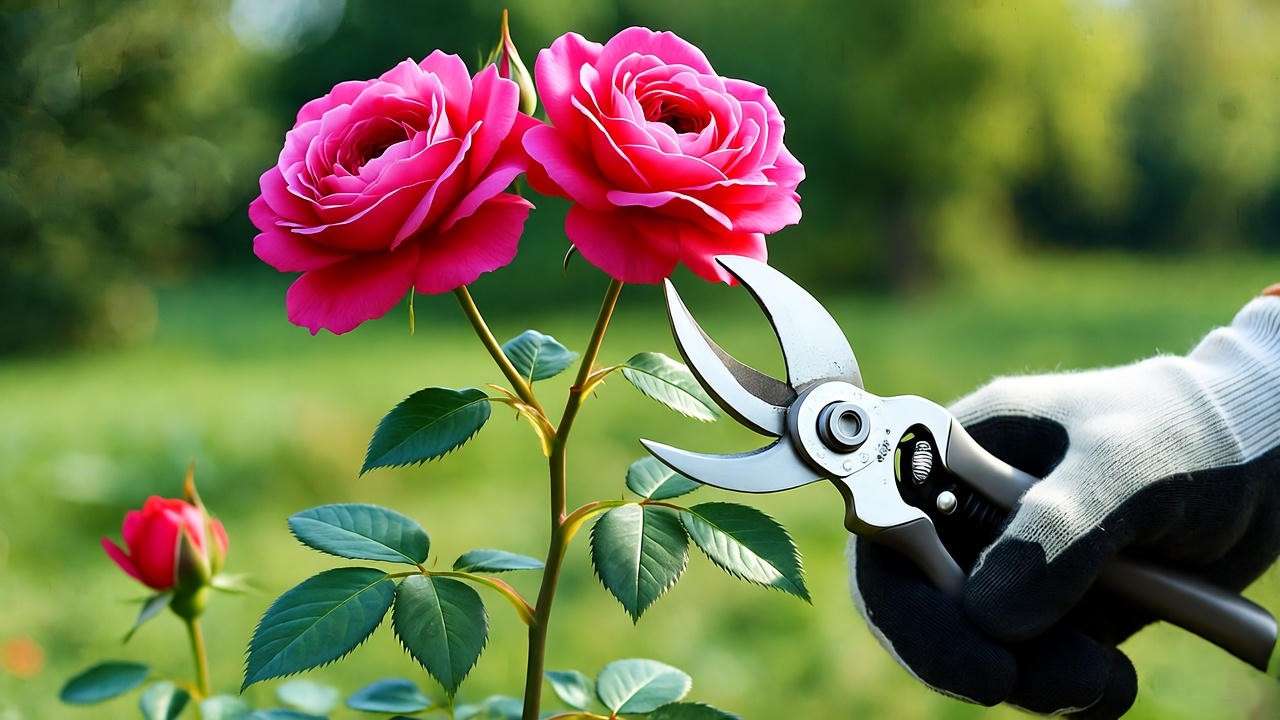
4.4 Mulching and Soil Maintenance
Mulching conserves moisture, suppresses weeds, and regulates soil temperature. Apply a 2–3-inch layer of organic mulch (bark, straw, or wood chips) around the base, keeping it 2 inches from the stem to prevent rot. Refresh mulch annually. Regularly test soil pH and amend with lime (to raise pH) or sulfur (to lower pH) as needed.
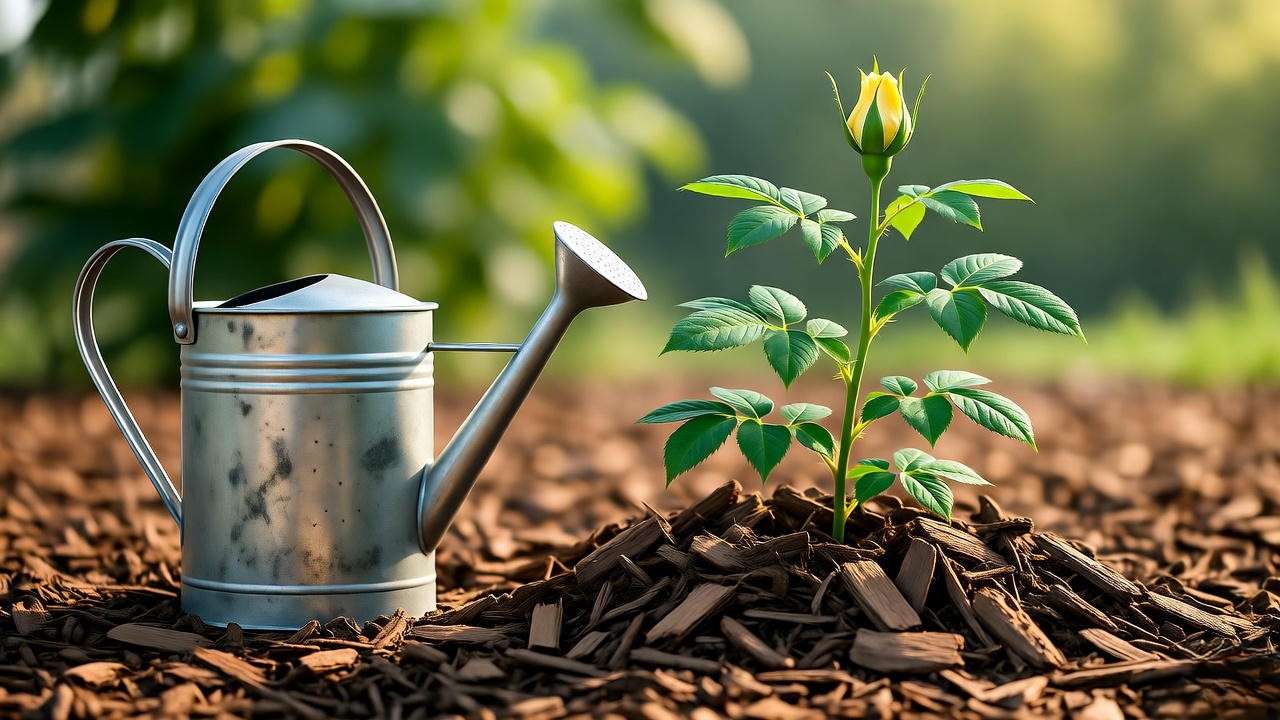
5. Protecting Damask Roses from Pests and Diseases 🐞
5.1 Common Pests
Damask roses can attract pests, but with vigilance, you can keep them at bay. Common culprits include:
- Aphids: Small, sap-sucking insects that cluster on new growth, causing leaves to curl. Spray with a strong water jet or use insecticidal soap.
- Spider Mites: Tiny pests that create fine webs and stippled leaves. Increase humidity and apply neem oil for control.
- Japanese Beetles: Metallic green beetles that chew petals and leaves. Hand-pick early in the morning or use organic traps.
Expert Tip: Introduce beneficial insects like ladybugs or lacewings to naturally reduce aphid populations. Companion planting with marigolds can also deter pests.
5.2 Common Diseases
Damask roses are susceptible to fungal diseases, but proper care minimizes risks:
- Black Spot: Dark spots on leaves, leading to yellowing and drop. Remove affected leaves and apply organic fungicides like sulfur.
- Powdery Mildew: White, powdery coating on leaves, often in humid conditions. Improve air circulation and use neem oil.
- Rust: Orange pustules on leaf undersides. Avoid overhead watering and treat with copper-based fungicides.
Prevention: Space plants adequately, water at the base, and remove debris to reduce disease spread.
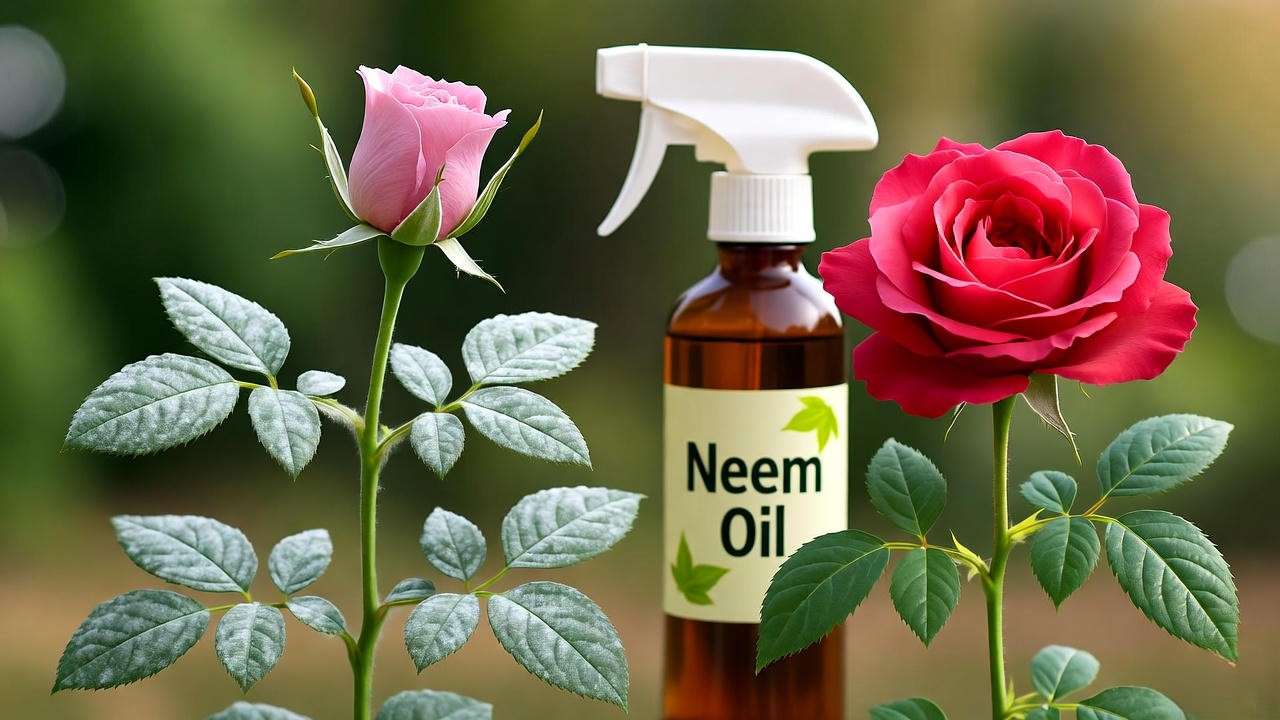
5.3 Winter Protection
In colder climates (USDA zones 4–6), protect damask roses from harsh winters:
- Mulching: Pile 6–8 inches of straw or shredded bark around the base after the first frost.
- Wrapping: Use burlap or frost cloth to shield canes from wind and ice.
- Mounding: Heap soil or compost around the graft union for insulation.
In milder zones (7–9), light mulching is often sufficient. Remove winter protection in spring once frost risks pass.
6. Encouraging Vibrant Blooms 🌺
6.1 Deadheading for Continuous Flowering
Deadheading—removing spent blooms—encourages damask roses to produce more flowers. Snip faded blooms just above a five-leaflet set, using clean pruners. For repeat bloomers like ‘Quatre Saisons,’ regular deadheading extends the flowering season into fall. Avoid deadheading late in the season to allow hips (fruit) to form, signaling dormancy.
6.2 Boosting Flower Quality
Vibrant blooms depend on optimal care:
- Sunlight: Ensure 6–8 hours of direct sun for rich color and large flowers.
- Nutrition: Balanced fertilizers enhance petal size and fragrance. Potassium-rich feeds boost bloom quality.
- Water: Consistent moisture prevents stress, which can reduce flower size.
Expert Insight: To maximize the signature damask rose fragrance, maintain soil pH at 6.0–6.5 and avoid over-fertilizing with nitrogen, which prioritizes leaves over blooms.
6.3 Harvesting Roses
Harvest damask roses for bouquets or crafts:
- Timing: Cut blooms early in the morning when they’re most hydrated, just as petals begin to unfurl.
- Technique: Use sharp shears to cut stems at a 45-degree angle, leaving 2–3 sets of leaves on the plant.
- Uses: Create potpourri, rose water, or culinary products like rose petal jam. Always handle petals gently to preserve their fragrance.
Tip: Place cut roses in lukewarm water with floral preservative to extend vase life up to 10 days.
7. Troubleshooting Common Issues 🛠️
7.1 Why Aren’t My Damask Roses Blooming?
If your roses aren’t flowering, consider these causes:
- Insufficient Sunlight: Move container plants or prune nearby trees to increase light exposure.
- Poor Nutrition: Test soil and apply a balanced fertilizer if nutrients are low.
- Improper Pruning: Over-pruning or cutting at the wrong time can reduce blooms. Follow pruning guidelines in section 4.3.
Solution: Adjust care practices and monitor progress. If issues persist, consult a local rose society for tailored advice.
7.2 Yellowing Leaves or Drooping Plants
Yellow leaves or wilting may indicate:
- Overwatering: Check soil drainage and reduce watering frequency.
- Nutrient Deficiency: Yellowing between veins suggests iron or nitrogen deficiency. Apply a chelated iron supplement or balanced fertilizer.
- Pests: Inspect for aphids or spider mites and treat accordingly.
Diagnosis Plan: Check soil moisture, inspect leaves, and test soil nutrients to pinpoint the issue.
7.3 Dealing with Poor Soil Conditions
If soil is heavy clay or sandy, amend it:
- Clay Soil: Add compost and gypsum to improve drainage.
- Sandy Soil: Mix in organic matter like peat moss to retain moisture.
- Testing: Use a home soil test kit to monitor pH and nutrient levels annually.
Long-Term Strategy: Build raised beds or incorporate cover crops to improve soil structure over time.
8. Advanced Tips for Damask Rose Enthusiasts 🌟
8.1 Propagating Damask Roses
Propagate damask roses to expand your collection:
- Cuttings: Take 6–8-inch stem cuttings in early summer, dip in rooting hormone, and plant in a moist, well-draining mix. Keep in indirect light until roots form (4–6 weeks).
- Layering: Bend a low stem to the ground, pin it, and cover with soil. Once rooted, sever from the parent plant.
- Grafting: Advanced technique for specific varieties, best left to experienced growers.
Example: Propagate ‘Quatre Saisons’ via cuttings for a cost-effective way to multiply this repeat bloomer.
8.2 Companion Planting
Pair damask roses with companions to enhance growth and deter pests:
- Lavender: Repels aphids and complements rose aesthetics.
- Marigolds: Deter nematodes and add vibrant color.
- Catmint: Attracts pollinators and repels pests.
Avoid planting near aggressive competitors like mint or trees that shade roses.
8.3 Creating a Rose Garden
Design a stunning rose garden:
- Layout: Arrange damask roses in clusters for impact, spacing 3–4 feet apart.
- Color Schemes: Mix pink ‘Ispahan’ with white ‘Madame Hardy’ for contrast.
- Mixing Varieties: Combine damask roses with hybrid teas or climbers for diversity.
Example Plan: For a small 10×10-foot garden, plant three ‘Quatre Saisons’ roses in the center, surrounded by lavender and marigolds, with a trellis for a climbing rose at the back.
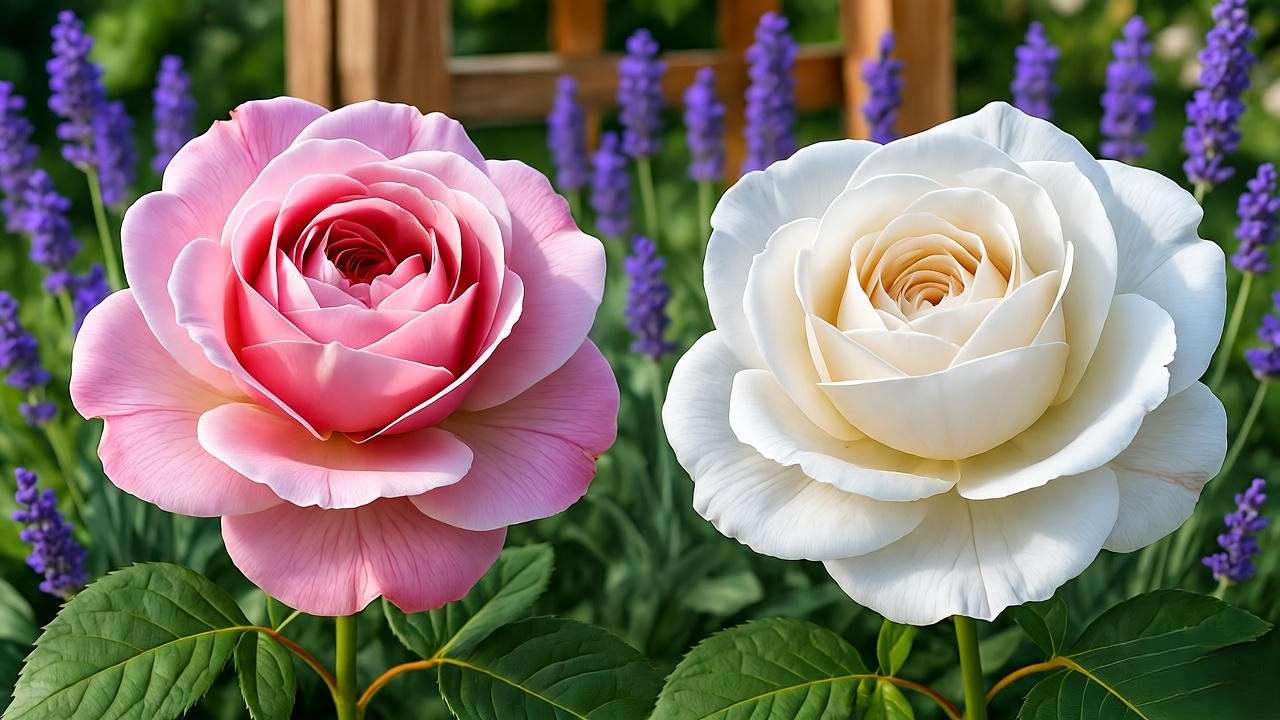
9. FAQs About Damask Rose Plants ❓
- How long do damask rose plants live? With proper care, they can thrive for 20–50 years, making them a long-term investment.
- Can damask roses grow in pots? Yes, use a 15–20-gallon pot with good drainage and regular watering.
- How often should I fertilize my damask roses? Twice per growing season—early spring and mid-summer—for optimal growth.
- Are damask roses good for beginners? Absolutely, their hardiness makes them forgiving, but basic care knowledge is essential.
- What’s the best way to use damask rose petals? Dry for potpourri, distill for rose water, or use fresh in teas and desserts.
10. Conclusion
Damask rose plants are a gardener’s delight, offering unmatched beauty, fragrance, and historical charm. With the right care—proper planting, consistent watering, strategic pruning, and pest management—you can cultivate vibrant blooms that transform your garden into a sensory haven. This guide provides everything you need to succeed, from choosing the perfect variety to troubleshooting issues. Start your damask rose journey today and enjoy the rewards of lush, fragrant flowers for years to come! 🌸
Call to Action: Share your damask rose success stories or questions in the comments below. For more tips, explore our articles on rose pruning and soil health, or visit the American Rose Society for expert resources.

